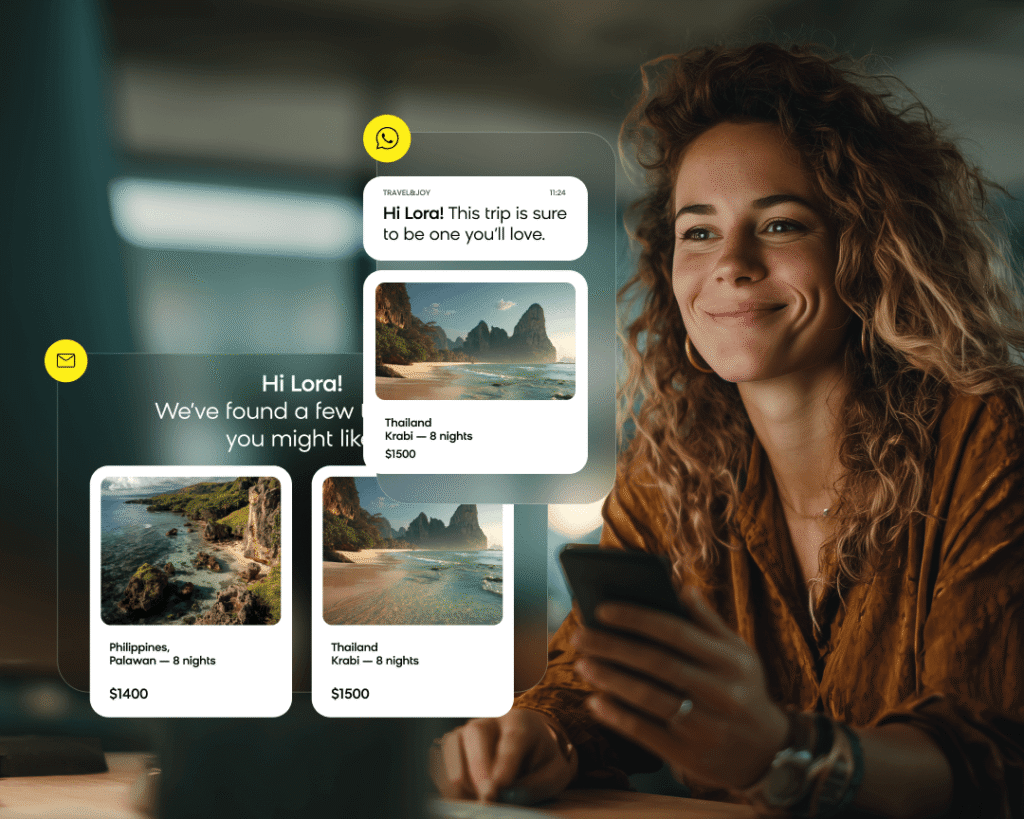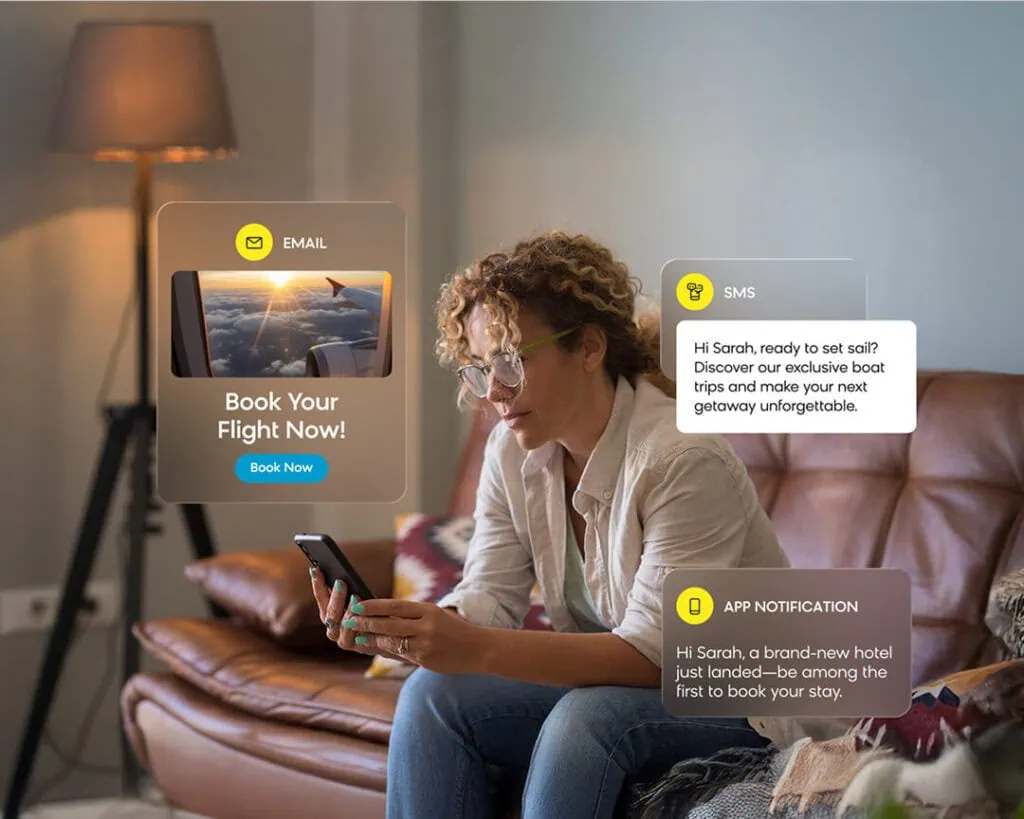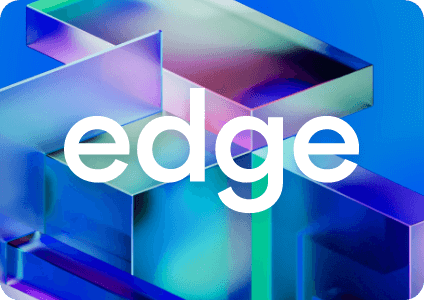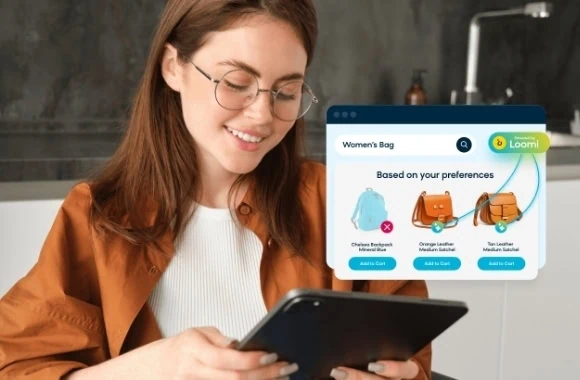“Cross-channel marketing” appears in countless boardroom presentations, yet execution remains painfully fragmented across most organizations. Many brands still run siloed campaigns with disconnected workflows while claiming to operate “connected” channels.
Here’s the reality: Modern consumers move fluidly between touchpoints. They browse products on mobile during lunch, research reviews on desktop that evening, and expect you to remember their preferences in tomorrow’s email. This seamless behavior exposes the glaring gaps in traditional marketing approaches.
Legacy martech stacks make things worse by limiting real-time responsiveness. Marketing teams juggle multiple platforms that barely communicate with each other. The result? Inconsistent messaging and countless missed engagement opportunities.
The solution moves beyond surface-level channel coordination. Learn how you can use unified customer data within omnichannel marketing solutions to power more effective marketing strategies.
What Multichannel, Cross-Channel, and Omnichannel Actually Mean for Your Business
Let’s cut through the jargon and focus on what these approaches deliver in practice:
Multichannel marketing establishes your presence across multiple touchpoints — email, social media, website, SMS, etc. — with minimal coordination. Each channel operates independently, like separate departments that never talk.
Cross-channel marketing introduces coordination through shared campaign themes or sequential messaging. Customer data often remains fragmented across platforms, but you’re making an effort to connect the dots.
Omnichannel marketing achieves full data integration and connected experiences throughout the customer lifecycle. Every touchpoint shares unified customer profiles and behavioral insights, creating truly seamless interactions.

Understanding the differences between omnichannel vs. multichannel will help you identify where your current strategy falls short and what capabilities you need to build.
The Modern Consumer: Always Connected, Never Linear
Today’s buyer journey laughs at your traditional funnel models. Customers research products across multiple devices, compare options on different platforms, and make purchase decisions influenced by touchpoints spanning weeks or months.
What do they expect from your brand? Context that travels with them across every interaction.
If a customer is browsing outdoor gear on your site, don’t send them an email showing a completely different category of product recommendations. That’s a disconnected experience and a wasted opportunity to understand their current context and encourage a conversion.
Remember: Behavior should take precedence over demographics. Two customers sharing similar age, location, and income profiles may exhibit completely different engagement patterns. Real-time behavioral signals provide far more accurate intent indicators than static demographic data ever could.
Journey stages have become completely unpredictable. A returning customer might simultaneously research new product categories while repurchasing familiar items. This requires engagement strategies that can accommodate multiple journey states within a single interaction.
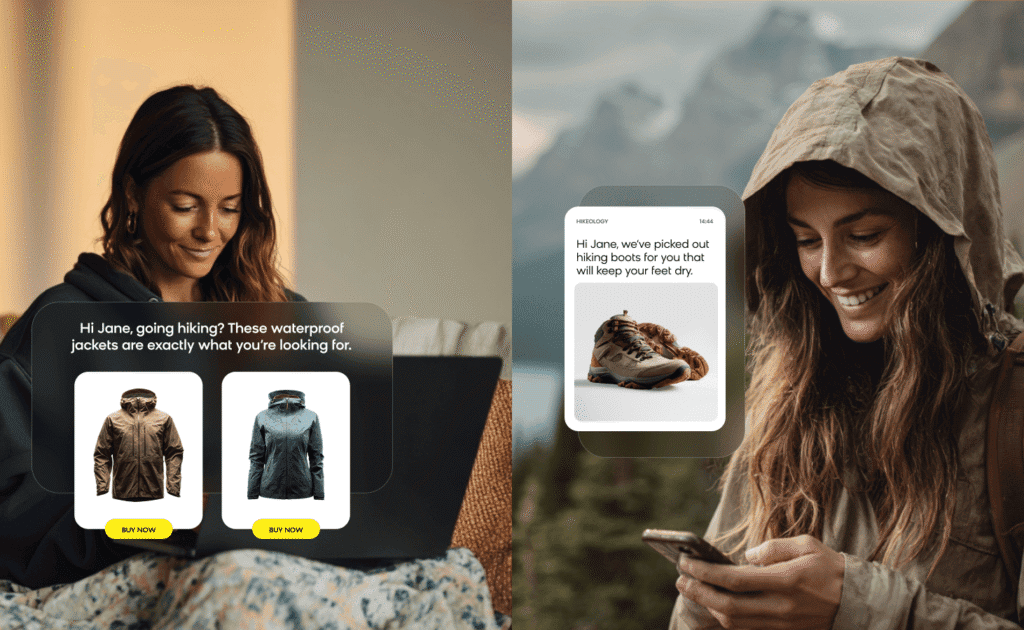
Static automation workflows simply cannot adapt quickly enough to match actual customer behavior patterns. You need systems that learn and respond in real-time.
Where Most Cross-Channel Efforts Break Down
Even well-intentioned cross-channel initiatives crash and burn when strategy and systems don’t evolve together. Let’s examine the four fatal gaps that kill otherwise solid marketing strategies.
The Four Fatal Gaps
Data silos represent your most fundamental barrier. Customer information remains trapped in separate platforms (e.g., email service providers, social media management tools, ecommerce systems, customer service databases). This fragmentation prevents you from building comprehensive profiles and sending out consistent messaging.
An organizational structure that lacks cohesion. Marketing teams organized by channel specialization develop distinct KPIs and campaign calendars. Your email team optimizes for open rates while social media specialists focus on engagement metrics. These misaligned incentives make it difficult to create unified customer experiences.
Testing cycles lag hopelessly behind customer expectations. Traditional A/B testing requires weeks to reach statistical significance while customer behavior shifts daily. This delayed optimization prevents you from capitalizing on trending topics and seasonal opportunities when they actually matter.
Trigger logic disconnected from actual journey progression creates irrelevant communications that annoy customers. Automated sequences based on simple rules (e.g., “send welcome series after email signup”) completely ignore contextual factors like referral source and browsing history.
Warning Signs Your Strategy Is Seriously Outdated
Here are some indicators that you need to update your strategy:
- Journey triggers rely on hard-coded rules rather than dynamic behavioral signals
- Messaging inconsistency appears across touchpoints for the same customer
- Engagement KPIs are evaluated in complete isolation
- Testing insights from one channel never inform optimization across others
- Customer data requires manual export and import between marketing tools
If you recognize these symptoms, it’s time to explore cross-channel marketing automation that actually connects your customer experience.
Focus on Unified Journeys, Not Just Connected Channels
Success extends far beyond establishing presence across multiple touchpoints. Winning brands focus on intelligent experience creation rather than simply connecting channels.
Connected channels represent table stakes now. Every brand maintains email lists, social media accounts, and website optimization efforts. The real differentiator lies in journey management guided by real-time data and adaptive automation.
The New Requirements for Success
Unified customer profiles eliminate those fragmented views that create disjointed experiences. Integrated profiles reveal customer preferences, engagement patterns, and purchase history that inform relevant messaging across all channels without missing a beat.

Real-time event streaming enables immediate response to customer behavior changes. When customers abandon shopping carts or visit specific product categories, connected systems trigger relevant responses across appropriate channels without any delay.
Context-aware decisioning engines replace static campaign logic with dynamic engagement strategies. These systems evaluate customer lifecycle stage, recent interaction history, device preferences, and behavioral signals to determine optimal messaging, timing, and channel selection automatically.
This approach enables achieving true 1-to-1 personalization that feels natural rather than robotic.
Building Your Foundation: 5 Essential Capabilities
Strategic cross-channel marketing requires specific technological and data capabilities that enable unified customer experiences at scale. Here’s what you need to build or buy to stay ahead of the competition:
Unified Customer Data Infrastructure
Centralized customer data platforms break down silos between your marketing tools, customer service systems, and ecommerce platforms. Unified profiles combine behavioral data, transaction history, engagement preferences, and demographic information into comprehensive customer views that actually make sense.
Predictive Segmentation That Intelligently Adapts
Once you have unified data, you can use the power of AI to create real-time segments that adapt to behavioral changes rather than relying on static rules you set six months ago. Machine learning algorithms identify patterns that predict future actions, enabling proactive engagement strategies that feel almost psychic to your customers. With the right tool, you can even have AI create these segments automatically.
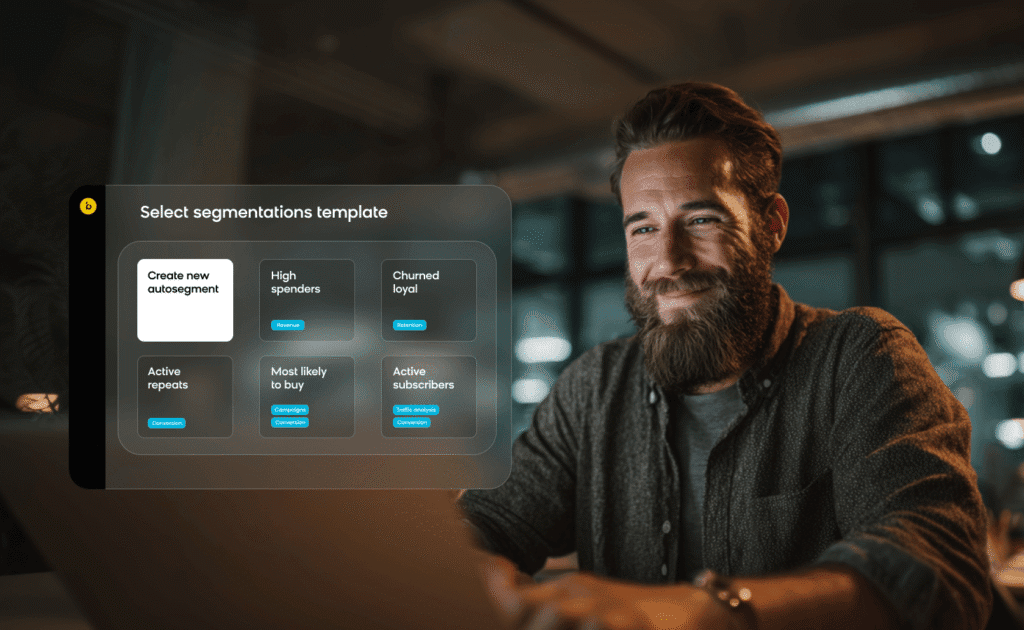
Omnichannel Management in One Place
If your channels are broken up into separate technologies, you run the risk of generating data silos and a fractured organization. You need to find a solution that gives you an easy way to manage all your channels, whether that’s web, email, SMS, WhatsApp, in-app, push, or something else. This way, you can ensure consistent messaging and optimal channel selection. Single-platform management prevents the technical complexity that plagues multi-vendor approaches.
Resource and Content Optimization
With an AI-powered platform, you’ll be able to test content variations at scale and find the optimal campaign strategy more quickly. With a solution powered by AI agents, you’ll also streamline processes and reduce the amount of manual tasks in a day-to-day workflow. This will free up your team to focus on high-impact strategy and developing new ideas to test.
Real-Time AI Testing and Feedback
AI-powered testing, like contextual personalization, provides faster insight cycles than traditional A/B testing methods. Machine learning algorithms can look at a shopper’s entire context (purchase history, browsing behavior, preferences, etc.) to find the best offer, content variant, time of day, and more to send, resulting in a more personalized experience.
Results in Action: How Leading Brands Are Winning
Leading brands across industries demonstrate measurable results from strategic cross-channel marketing execution. Here are some brands that moved beyond theory to deliver real results.
Isadore: Turning Email and Website Data Into Revenue
Premium cycling apparel brand Isadore integrated email campaigns with website behavioral data to create genuinely personalized customer experiences. By connecting browsing patterns with email engagement metrics, the company developed targeted campaigns reflecting individual customer interests and purchase timing preferences.
Results: 50% increase in email-driven revenue and 29% reduction in product returns.
Instead of generic promotional blasts, customers received relevant product recommendations based on actual browsing behavior. This led to higher engagement and fewer disappointed customers returning ill-fitting gear.
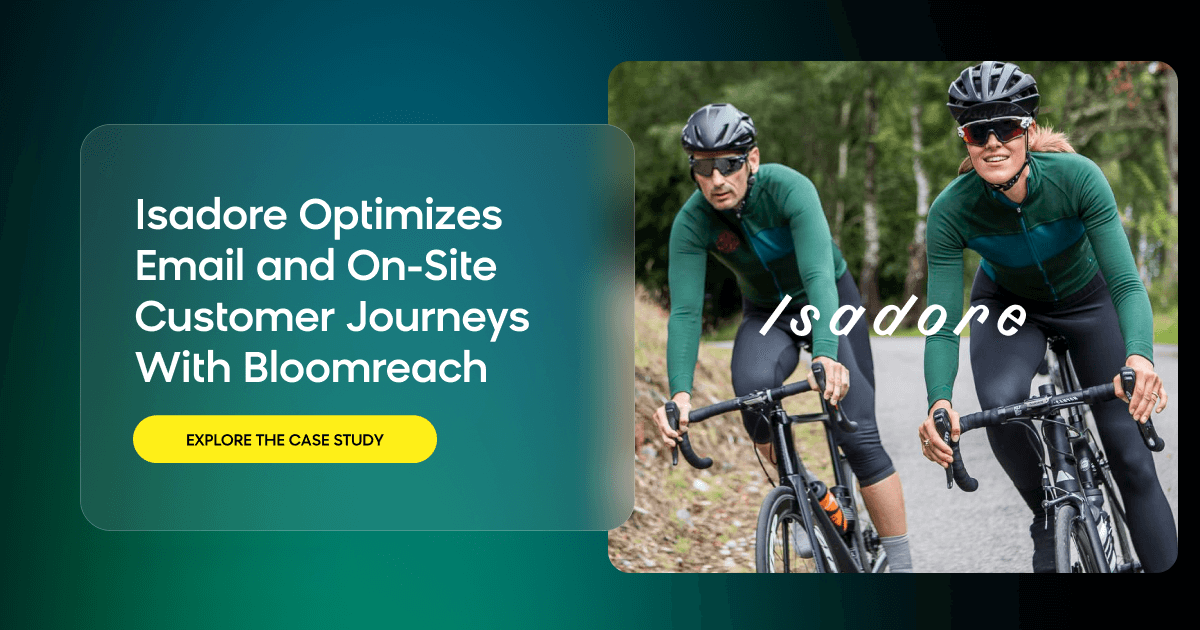
Venture Group: WhatsApp Drives Unexpected Loyalty
Venture Group leveraged WhatsApp marketing to enhance customer engagement and loyalty program participation. The brand’s cross-channel approach combines traditional email campaigns with WhatsApp messaging for time-sensitive offers and personalized communication.
Results: 87% WhatsApp read rate — significantly higher than email open rates or SMS engagement.
By adding another channel into the mix, Venture Group was able to reach more customers on their preferred platform. The high read rate speaks to the importance of incorporating multiple channels into the brand’s marketing strategy.

How Agentic AI Is Reshaping Marketing Management
The marketing technology landscape is entering an era of agentic AI — systems that intelligently make decisions across customer touchpoints rather than simply automating predetermined actions you previously configured.
Traditional marketing automation follows predetermined rules and sequences. When customers perform specific actions — email signup, product purchase, cart abandonment, etc. — automated systems trigger corresponding responses based on preconfigured workflows.
This rule-based automation cannot adapt to unexpected customer behaviors or capitalize on emerging opportunities when they actually arise.
What Makes Agentic AI Fundamentally Different
Active problem identification enables AI systems to recognize broken customer journeys or missed engagement opportunities without any human intervention. These systems analyze interaction patterns to identify friction points, optimal contact timing, and personalization opportunities you’d never notice manually.
In-flight experience adjustment allows AI to modify campaigns, content, and channel selection based on real-time customer responses. Rather than completing predetermined sequences regardless of engagement levels, agentic systems adapt messaging and timing to maximize relevance for each individual.
Autonomous coordination manages experiences across multiple touchpoints without manual configuration for each possible customer path. AI systems understand contextual relationships between channels and automatically optimize engagement strategies.
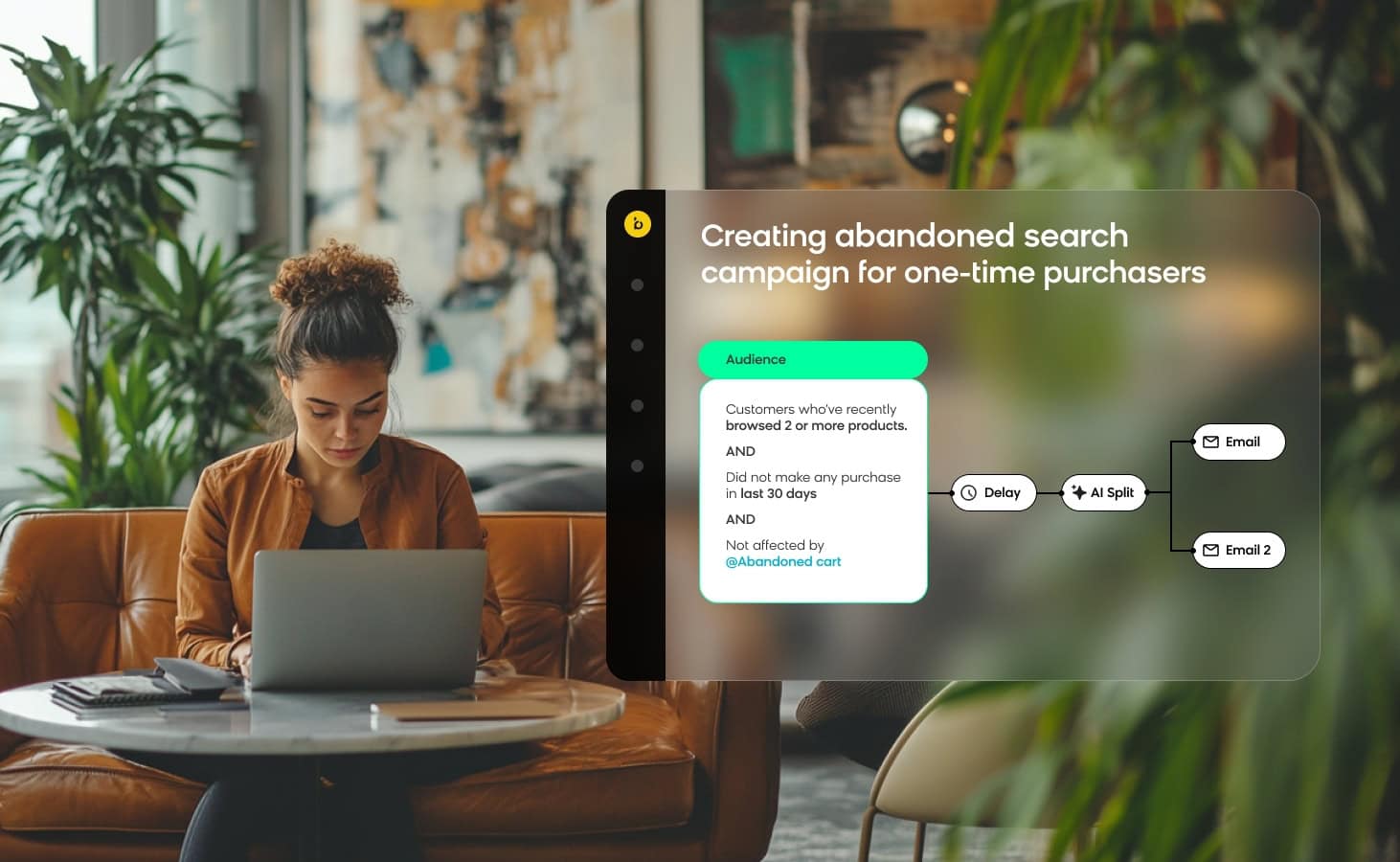
Bloomreach’s Agentic AI Advantage
Loomi AI, Bloomreach’s AI built for commerce use cases, represents this next-generation approach to marketing. Rather than requiring your team to manually design campaign flows and decision trees, Loomi AI taps into the power of AI agents to enable conversation-like commerce experiences that adapt dynamically to customer needs.
The platform frees your marketing teams from tactical execution tasks, allowing focus on strategic customer experience design while omnichannel AI handles moment-to-moment optimization and personalization decisions.
Ready To Transform Your Cross-Channel Marketing?
Your customers expect seamless, intelligent experiences across every touchpoint. Traditional marketing automation simply can’t deliver the personalized, adaptive engagement that builds lasting customer loyalty in today’s market.
But Bloomreach Engagement can. Our all-in-one platform combines unified customer data, AI-powered personalization, and autonomous journey management to create conversational commerce experiences that adapt in real time to individual customer needs and preferences.
Stop managing disconnected channels, and start building unified customer relationships that drive real business results. Learn more about Bloomreach Engagement today by scheduling a personalized demo.

